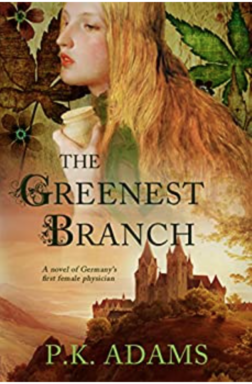Troublemaker or Saint?
In this time of restricted travel, many people feel confined or even trapped in their circumstances—valid emotions, of course!
But just imagine what your options might have been if you were Hildegard of Bingen, born in 1098 as child #10 to a family of the German lower nobility.
Her name probably means nothing to most of us. During her lifetime, her activities created enemies as well as admirers.
Why does the Roman Catholic Church consider her a saint?
Hildegard’s parents sent her to an anchorite convent to become a religious recluse when she was between 8 and 14. (This was a permanent enclosure in a cell built against a wall of the village church.)
In spite of her limited opportunities, Hildegard stirred up the Roman Catholic Church and accomplished amazing things:
Founded 2 monasteriesCreated her own language, Lingua IgnotaWrote: many poems and composed songs, hymns, and many chantslives of saintstexts about medicine, botany, and natural history3 volumes of theology (describing and interpreting her visions) a morality play, Ordo VirtutumIf you’re a musician or writer, be aware that the Roman Church considers Hildegard as your patron saint.
In my book review below, I talk about why I thoroughly enjoyed The Greenest Branch , (Hildegard of Bingen Book 1).Hildegard’s story can inspire us to make the most of our circumstances, however humble.
I’m happy to report I’m nearing the end of the first draft of my work in progress (the sequel to Lucia’s Renaissance).
Readers, what activities has confinement motivated you to try?

The Greenest Branch, by P.K. Adams, is one of the most enjoyable novels I’ve read in some time. Why?
I loved the voice of the protagonist (Hildegard of Bingen)—intelligent, but not anachronisticI sympathized and rooted for her from the start, due to her lack of freedom to make choices about her lifeIt’s clean and not overly violent, but not ignoring the realities of lifeThe engaging plot kept me reading because of the drama and conflict of human interactionsComing-of-age novels are among my favorites, especially if the young person matures into an heroic adult whose values I admireI enjoy historical novels based on actual historical figuresThe ending left me wanting to read more to find out how Hildegard confronted her challengesThe life details, herbal remedies, and description transported me to a distant time and place and kept me thereAs an historian, I enjoy reading novels set within the context of historical events, especially when they play into the novel’s plot.Possible con: Since I don’t know this specific era well, I can’t judge whether the life of Hildegard was as extraordinary as the author portrays it.
Audience: YA to adult, based on its clean plot and details, plus a heroic protagonist, in spite of the many struggles she faced.
Rating: Mild + for mild violence and brief kissing
If you think the Middle Ages are boring, this novel about a medieval girl’s extraordinary life at an isolated anchorite convent will change your mind, keep you turning pages, and broaden your worldview by immersing you in her time and place (and a second volume, The Column of Burning Spices, awaits readers). Highly recommended!
The post Troublemaker or Saint? appeared first on C.L.R. Peterson, Author.



